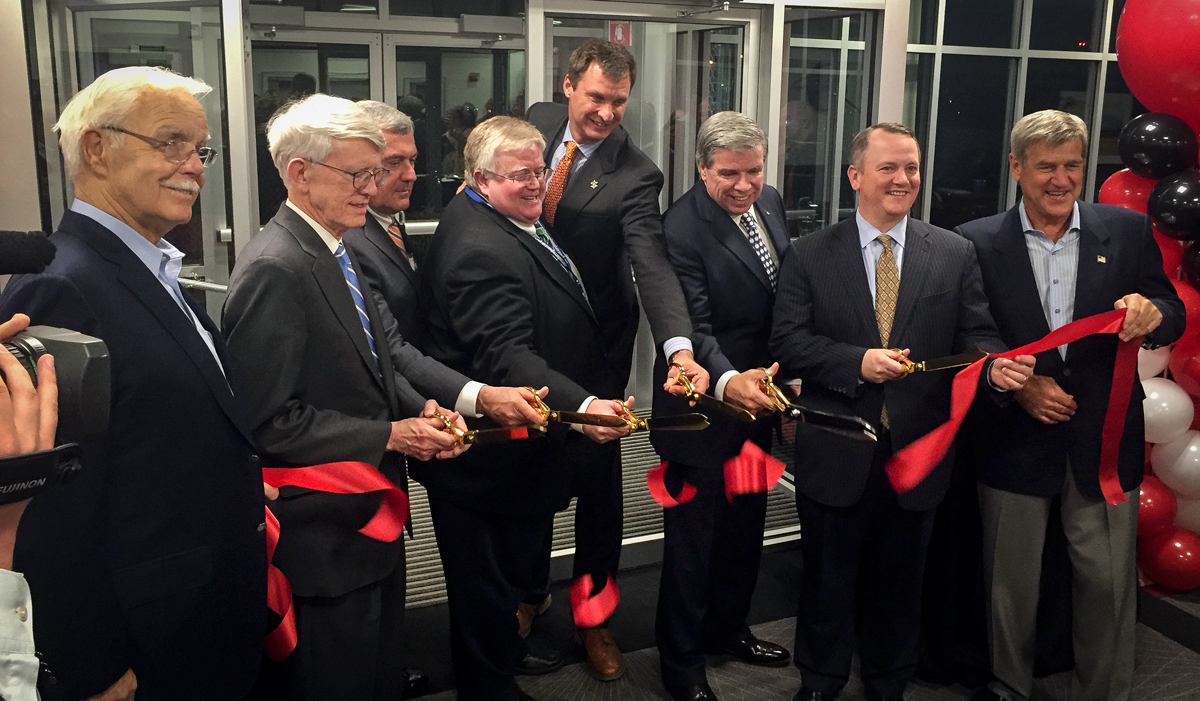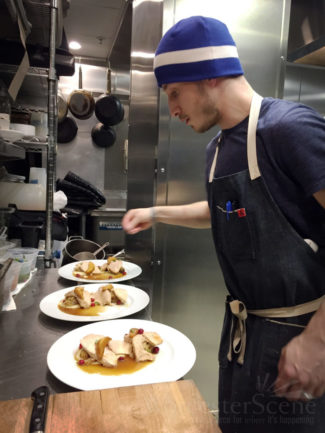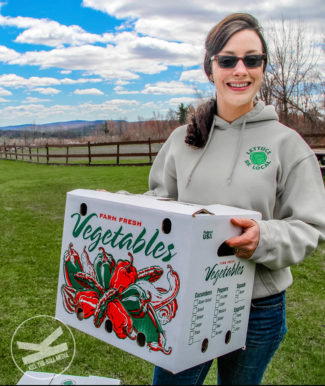
“Shop Local,”- this decal graces the doors of hundreds of independently-owned restaurants ranging from New York City to Portland, Maine. Vibrantly colored and overly sized, the message of the decal is clear – support local businesses. The feel-good notion when shopping local isn’t just about self-pride and organic products but instead, it is a statement of quality, pride and community investment. For decades, the food fight between big food chain restaurants and independently-owned restaurants has caused a stir too thick to ignore.

Digging deep into the underbelly of the “beef,” researchers take a step closer into the analysis of how money flows, the economic and social responsibilities and the impression left on the communities with a larger inclination to either small or big businesses.
With the expansion of global chains increasing in market share, there is a displacement of locally owned, independent businesses. The pace at which the market share shrinks for locals is staggering. According to the National Restaurant Association, restaurant industry sales are projected to reach $783 billion in 2016 – remaining as the nation’s second largest private sector employer with a workforce of 14.4 million. In a new report from food industry research firm NPD Group, last year the total number of chain restaurants increased by more than 3,200 locations while over 7,100 independent eateries closed up shop in 2015.
Tim Murray, President and CEO of the Worcester Chamber of Commerce, understands the economic impacts of shopping local: “There is no doubt that the money spent through local businesses and restaurants is cycled through the community longer than that of big box retail. Worcester has turned into a ‘foodie hub’ due its entrepreneurial spirit. I have tremendous respect and admiration for the shop local movement and at The Chamber of Commerce we boost local businesses and empower our members. Just few years ago, the Worcester food scene was restricted to Shrewsbury Street and Highland Street and now, it continues to grow into other areas to increase diversity and reach the exciting ethnic background of the city. I want a local vibrant food scene, and we are heading in the right direction.”

Eating local is not a newly discovered concept but instead a concept revisited over and over again since the early 70s. Take a step closer and visit the theory of shop local from Midcoast Maine. In 2003, a study by Institute for Local Self-Reliance was concluded that despite the economic growth of big boxed food chains, the money reflected back into the local economy was slim in comparison to the independently-owned restaurants. While the study concluded findings based on eight locally owned businesses, the numbers were undeniable. The study states in terms of sourcing inventory, supplies, and services, it was found that the local businesses are supporting a variety of other local businesses. Chain stores were said to spend less than 15% of revenue within the state, while locally owned businesses spend more than half of their revenue within the state.
According to Executive Chef of Armsby Abbey, Damian Evangelous, it is extremely difficult to source all restaurant products locally. “Our menu is probably sourced between 70 and 80 percent locally – mostly Central Massachusetts but including New England and parts of New York – and during the peak season, I work hard to increase that number. We are not just trying to source locally, we are also seeking products from local farmers and producers who are working to produce the best, healthiest, sustainable product possible. We want to show that some of the most delicious food we could possibly imagine is available right here in our region.”
The big food chains continue to stagger in quantity within developing cities but all at the expense of the little guy.
Even at the most basic level of food consumption – purchasing vegetables – has become an eye-opening experience for many. The New Economics Foundation, an independent economic think tank, compared locally purchased vegetables from farmer’s markets to those purchase at supermarkets. The foundation found that twice the money stayed in the community when purchased through locally owned farmer’s markets. David Boyle, author and NEF researcher, told Time, “That means those purchases are twice as efficient in terms of keeping the local economy alive.”

The preconceived notion that big businesses offer food at a cheaper rate may be true. It is a statement that can be heard echoing through the various debates between the big chain enthusiasts and local shop supporters. Big food chains are wooing consumers with their endless discounts and promotional deals, offering a night on the town without breaking the bank. But Susan Witt, Executive Director of the E.F. Schumacher Society added that the difference [in price] falls away once you consider the increase in local employment as well as relationships that grow when people buy from people they know. Witt states the “shop local” campaign can signify an alert to the community about gaps in the local market, allowing locally-owned businesses to provide a product hard to come by.
“We are able to source locally by consistently changing our menu with the seasons and growing patterns of the local sources,” says Tom Studer, General Manager of Lock 50. “We bring in new creative techniques and practices with our local sources to provide customers with a quality that no chain can offer. Smaller restaurants, us included, have the ability to sell fish that came off the boat this afternoon, tomatoes that were picked an hour before they hit the dishes and herbs that are grown by the Chefs themselves.”
While the pricing of the independently-owned restaurants seems higher and according to Witt, justifiable, there are several other elements to consider when debating over the increased menu prices. Lowered transportation, hence lower environmental factors. The money – while not usually taken in as a large sum of profit for locally owned restaurants – is cycled through the local economy. David Morris, Vice President of the Institute for Local Self-Reliance, a nonprofit economic research and development organization based in Minneapolis and Washington, D.C. says, “That means more goes into input costs – supplies and upkeep, printing, advertising, paying employees – which puts that money right back into the community.”
“While our biggest goal is to be the direct correlation between locally-owned restaurants, Chefs and consumers, we also aim to boost the local economy by supporting local small businesses to help with graphic design, print product, and marketing material – to name a few. We also work with the local schools and hospitals to be a supplier for their food needs but also to educate the youth on the importance of food and source,” says Lynn Stromberg, owner of Lettuce Be Local – a food hub committed to strengthening the community through healthy eating direct from local farms. “I will search the ends of earth for services from a local business for Lettuce Be Local. If we are boosting local farms, restaurants and schools, then it is only appropriate to enforce the Shop Local concept through our business needs.”
According to a collection of studies from The Institute for Local Self-Reliance, it states that in recent decades, policy across the country has privileged the biggest corporations. Yet a growing body of research is providing something that many citizens already know: small scale, locally-owned businesses create communities that are more prosperous, entrepreneurial, connected and generally better across a wide range of metrics.
The economic returns, as stated in the Independent BC: Small Business and The British Columbia Economy study, among restaurants, for every $1,000,000 in sales, independents generate a figure of $650,000 in local economic activity versus $300,000 for chains. Across both sectors, this translates into about 2.6 times as many local jobs created when spending is directed to independent businesses instead of chains.
Shopping local doesn’t translate into anti-big food chains, but instead it translates into more local job opportunities, higher velocity of money, larger support of several locally-owned businesses through affiliations, improved quality and most of all, the growth and development of cities, residents and social value.

